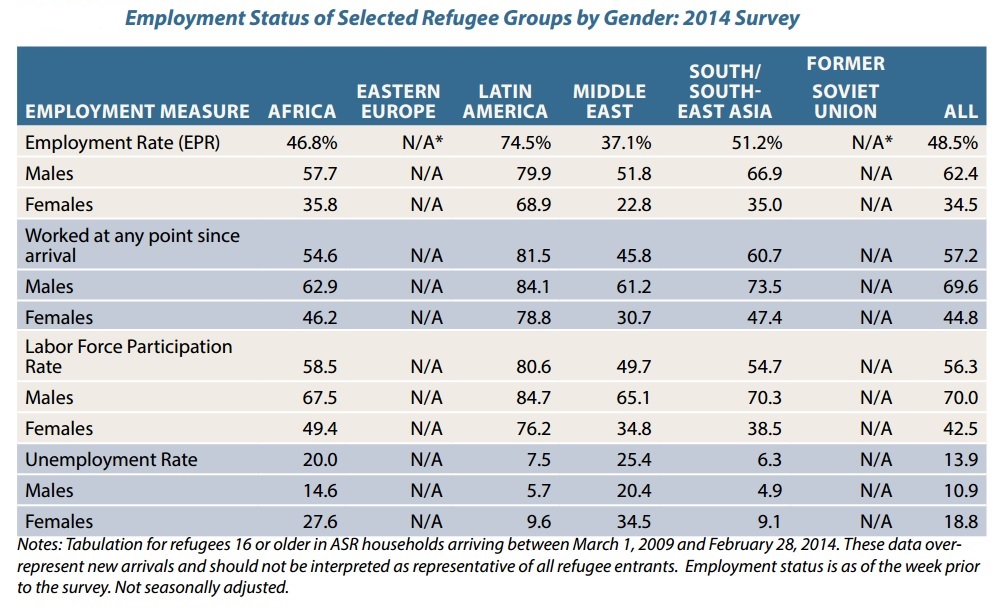Refugee data: That’s not Minnesota Nice
Given the fact that Minnesota is the number one destination for refugees in the United States, the Center wanted to figure out how the refugee resettlement program worked and how much it was costing taxpayers. We thought this would be a straightforward exercise. Wrong.
We also wanted to be able to report how the Program was working, judged by the goals of integration it sets forth (learning English and other helpful skills so at least adult men, and women without children, can work).
Are refugees learning English, working and becoming taxpayers? First, the costs, then we can talk benefits.
After diligently trying to find good cost data since last summer (including phone calls and emails to State offices), we gave up and sent a formal data request to the Department of Human Services (DHS). That was in early January of 2017 (with a revised request made later in the month after DHS told us it would be faster to limit the data to Dayton Administration years).
At the end of last week, Friday, March 3rd, I got an email from DHS basically saying that DHS has some of the data but not in an existing report. DHS offered another report which we got a copy of a few days ago. The data is incomplete; we will keep plugging away at getting state and federal data (and because it is so unreliable, build our own cost estimate model).
Apparently, DHS prepared that report for the Minneapolis Star Tribune. The Center’s efforts to get the same cost data are not mentioned, nor were we contacted or interviewed (this time) in an article (“Refugee resettlement costs are up but still a small part of welfare programs,” March 10, 2017).
Over the past three months, the Minnesota Department of Human Services crunched the numbers on refugee participation and spending in five assistance programs at the request of the Star Tribune.
(Emphasis added.) If DHS has been “crunching the numbers” for the last three months for the Strib, why was DHS playing hide-the-ball with the Center? And why isn’t this report available on the DHS website to the public?
In any event, we are delighted to see that the Star Tribune has joined us in the hunt for good data and want to underline this admission from DHS:
Jim Koppel, an assistant commissioner at the department, says the state doesn’t normally track these costs because of its commitment to refugees: “We don’t look at the cost of people coming to Minnesota from Iowa and compare it to the cost of people coming from South Dakota.”
(Emphasis added.) What does that mean?
Allow me to translate DHS-Speak. If they track refugee-specific data, DHS thinks they are not good Minnesotans (i.e. it is rude and racist to track refugees). So they pretend that refugees are no different than other immigrants, or people moving here from Iowa. Instead DHS blindly throws taxpayer dollars at a program without any accountability to hard-working taxpayers, many of who are immigrants.
The Star Tribune also published another article that listed the big categories of welfare and other costs that one would reasonably expect lawmakers and citizens to know, so we can understand and assess the program. The first paragraph summed up the problem nicely:
For many state and federal programs in Minnesota, little or no data exist to estimate costs of refugee resettlement. Others do offer some answers.
Unfortunately DHS, most of Minnesota’s business chambers and the folks over at the University’s Humphrey School, are peddling a cost benefit analysis that is short on details about cost and even more vague about the benefits:
“In the short term, resettlement can be a very fiscally intensive exercise because of the kinds of needs refugees bring,” said Ryan Allen, an expert on resettlement at the University of Minnesota’s Humphrey School. “As people of working age find jobs and become more self-sufficient, benefits will accrue over time.”
So how is that working out?
We cannot tell you with any certainty today what kind of upfront investment Minnesota is making, but we can tell you that the benefit side of the equation is not assured. We can also say with certainty that with regard to work, and how welfare dependency affects long-term prospects for successful integration, culture matters. Culture is everything.
According to the Office of Refugee Resettlement 2014 report to Congress, 48.5% of refugees are working. This statistic, however, misrepresents differences across nationalities and cultures. Nationally, only 37.1% of Middle Eastern refugees are employed compared to 74.5% of Latin American refugees. When evaluated for region of origin, there are clear disparities between nationalities. These numbers are especially important if you look at the demographics of incoming refugees.

For example, see the chart below: According to our State Demographer, people born in India are much more likely to work, especially men (men 93%; women 37%). Mexicans work (men 89%; women 57%). Compare those high rates to low rates among Somali nationals, our largest group of refugees (Men 41%; women 54%). Why is a Somali woman more likely to work than a man? And the Hmong are clearly still struggling after decades in Minnesota.
Minnesotans don’t like to talk about this. It is politically incorrect and makes us uncomfortable. Maybe this is why it is so hard to get the data. But we have to get the data and we have to talk about it.
